These candles float, baby. Fire and water! Magic!
Project 38 finds us making floating candles with cookie cutters as molds. Martha’s description is so… romantic:
“With a set of graduated star-shaped cookie cutters, you can make a constellation to supply your dinner table with a galaxy of gentle light.”
Please continue with the outer space metaphors, I’m fascinated.
For this project, you get some cookie cutters (I didn’t want to use ones I use for food, right?) with “simple, broad shape[s] with straight (rather than curved) lines.” So, really, your only option is a star. I didn’t see one other cookie cutter in the store that had only straight lines. Stars it is!
Then, you put some tape on the edge of the cutters so that you can, essentially, tape them down to some aluminum foil.
So, you see how that works. Then, all you do is melt your wax, pour it in, and then add a wick with a tab (these come in packages; it’s a little metal circle with a prepared wick already attached).
Here’s where the fun begins. The Encycolpedia does recommend that you use beeswax. Well, it says beeswax works best for this project because “it has a lower melting point and more viscous consistency when melted, which prevents it from leaking out of the makeshift mold.”
Well, Encyclopedia, I already spent twenny bucks on the soy wax, of which I have plenty, and beeswax is twice as expensive. So I decided to move forward with the soy wax.
Hence:
Major, major leakage. Thankfully, the wax dried pretty quickly, so I kind of used the hardened, leaked wax as an extra barrier. Once it hardened, I poured more wax in, and then I even chipped away at the excess leaked wax, remelted that, and used it to fill the cutters completely up.
It ended up working ok, with my small adjustments. Would it have worked better with the beeswax? A better candle maker than I will have to figure that out.
When they have hardened, you are supposed to pull them out of the cookie cutters by the wick. Yeah, that didn’t really happen, either. I ended up pulling them up from the aluminum foil and then pushing them through the back of the cutters, which worked fine.
They were cute, though, although I have to say they didn’t float very well. One of the candles went out several times because a bead of water got into the wick area. Perhaps beeswax floats better, too, although Martha does not specify. I used a nice lilac scent in the wax that smells divine.
TIME INVESTED
These candles cooled a lot faster than the molded pear ones. Still, there is a good amount of active time with the melting and the pouring and the taping and such. It probably would’ve taken less time if the wax hadn’t leaked so much, though.
Active time = 1 ½ hours
Cooling time = 2 hours
Total time = 3 ½ hours
DIFFICULTY
Moderate to Difficult
TOTAL COST
I’m going to give the cost assuming you have none of the supplies and have to stock up on everything:
- soy wax, 1 lb = $8.99
- candle mold release spray = $10.99
- lilac scent oil, 1 oz = $3.52
- cookie cutter set = $4.99
- tabbed wicks = $2.99
- dry chemical fire extinguisher = $16.99
Total cost = $47.48
WAS IT WORTH IT?
No. There are other candle projects that seem nicer, and these candles just didn’t float that well. If you want to make candles, I’d go with another type. I have some more up my sleeve that I think are better, so stay tuned!













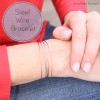
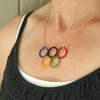




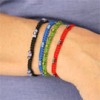

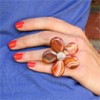
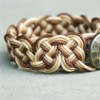
I’m a little unclear on why you couldn’t use cookie cutters with curved lines. I’ve done a lot of casting and molding and as long as there aren’t any undercuts, you should be fine.
They’re cute, though! Maybe beeswax would have floated better?
I love this project you’re doing. Prepare for lots of obnoxious comments